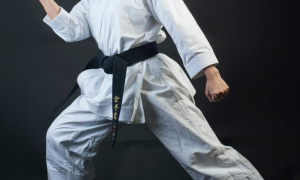
In the bustling world of martial arts, a recurring debate simmers: Is Taekwondo truly as ineffective as some skeptics claim it to be? This discourse thrives on contrasting viewpoints and spirited arguments, creating a martial arts landscape rife with speculation. In this article, we venture into this contentious arena, aiming to unravel the enigma surrounding Taekwondo’s efficacy. By peeling back the layers, we’ll uncover the perceived shortcomings and limitations that have led some to question “Why is Taekwondo Useless?”.
But in short, Is Taekwondo completely useless?
No, Taekwondo is not useless. While criticisms exist, its emphasis on high kicks and flashy techniques can limit practicality. However, Taekwondo holds value in some self-defense applications, physical fitness, and cultural significance, making it far from being deemed entirely useless.
Comparing Apples to Oranges
Taekwondo versus Judo, or Taekwondo versus Brazilian Jiu-Jitsu (BJJ) – it’s a comparison that’s as confounding as it is compelling. These martial arts, like distinct fruits on the same tree, hail from different branches and bear diverse fruits. Just as it’s fruitless to compare the crisp sweetness of an apple to the tangy juiciness of an orange, so too is it impractical to pit Taekwondo against grappling-centric disciplines like Judo or BJJ. Each possesses its own realm of strengths and applications, standing as testaments to martial diversity.
When evaluating Taekwondo, it’s important to consider its intended focus – judging it based on its effectiveness in a UFC fight alone might render it seemingly useless, but that doesn’t account for its strengths and goals.
The Olympic Variation vs. ITF Taekwondo
On the grand stage of global competition, Taekwondo showcases two distinct faces that often cause bewilderment. Olympic-style Taekwondo dazzles spectators with its high-flying acrobatics and electrifying sparring, yet its essence lies more in the realm of sport than self-defense. Conversely, ITF Taekwondo, the traditional variant, marches to a different beat. Employed in military training, ITF Taekwondo sharpens the blade of practicality over spectacle, demonstrating that this martial art can be harnessed for real-world scenarios with precision and intent.
Olympic-style Taekwondo’s theatrical displays might captivate audiences. However, they would likely prove completely useless in a fight against a trained opponent in almost any other martial art.
Are Taekwondo’s Fancy and High Kicks Useless?
Taekwondo’s hallmark is undoubtedly its high and flashy kicks. The spectacle of these aerial maneuvers can be breathtaking to behold. However, when the rubber meets the road of practicality, their usefulness comes under scrutiny. In the midst of a genuine combat setting, these lofty kicks might inadvertently open the door to vulnerability. The extended trajectory of a spinning kick, while visually captivating, creates a momentary gap, offering a swift grappler the chance to exploit the situation and swiftly bring a Taekwondo practitioner down.
Realism in Training
The padded floors of many Taekwondo dojos create a sense of security, but they can inadvertently foster a lack of realism. On the opposite end of the spectrum, martial arts like Judo and BJJ forge their expertise in the crucible of live, authentic training. The grappling encounters replicate real-world scenarios, nurturing adaptability and strategic thinking. This divergence underscores a distinct philosophy in training: the martial artist who hones precise techniques against a resisting opponent versus the one whose focus sometimes gravitates toward choreographed sequences.
Taekwondo’s Self-Defense Applications
Amid the dazzling high-flying kicks and intricate forms, Taekwondo houses a treasure trove of self-defense techniques (some more useless than others). The ITF variant, in particular, weaves self-defense intricacies into its curriculum. Yet, these practical applications are often overshadowed by the allure of impressive kicks. This dichotomy underscores that while self-defense proficiency somewhat exists within Taekwondo’s arsenal, it might not always be the prevailing focus of training.
Comparing Taekwondo, Judo, and BJJ: Practicality, Self-Defense, and Training Methods
| Martial Art | Practicality | Self-Defense | Training Methods |
|---|---|---|---|
| Taekwondo | High kicks | Some techniques | Sparring, patterns |
| Judo | Throws, holds | Groundwork | Live grappling |
| Brazilian Jiu-Jitsu | Groundwork | Submissions | Live rolling, drilling |
FAQ
Does Taekwondo help in a real fight?
For the average individual, Taekwondo can offer effective and useful self-defense skills, especially given its focus on powerful kicks and strikes. However, in high-tier MMA or professional combat scenarios, relying solely on Taekwondo will not suffice due to its limitations in grappling and versatile techniques.
Is it necessary to learn Taekwondo?
No, learning Taekwondo isn’t a necessity, but it holds intrinsic value for those drawn to its unique style of kicks and its emphasis on respect, discipline, and personal growth. While not mandatory, Taekwondo can provide physical fitness, character development, and cultural enrichment to those who resonate with its principles.
Does Taekwondo only use legs?
No, Taekwondo encompasses a broader spectrum of techniques beyond kicks. While renowned for its high and flashy kicks, Taekwondo also incorporates hand strikes, blocks, and other defensive maneuvers. This comprehensive approach ensures practitioners have a well-rounded skill set that goes beyond leg-based techniques.


